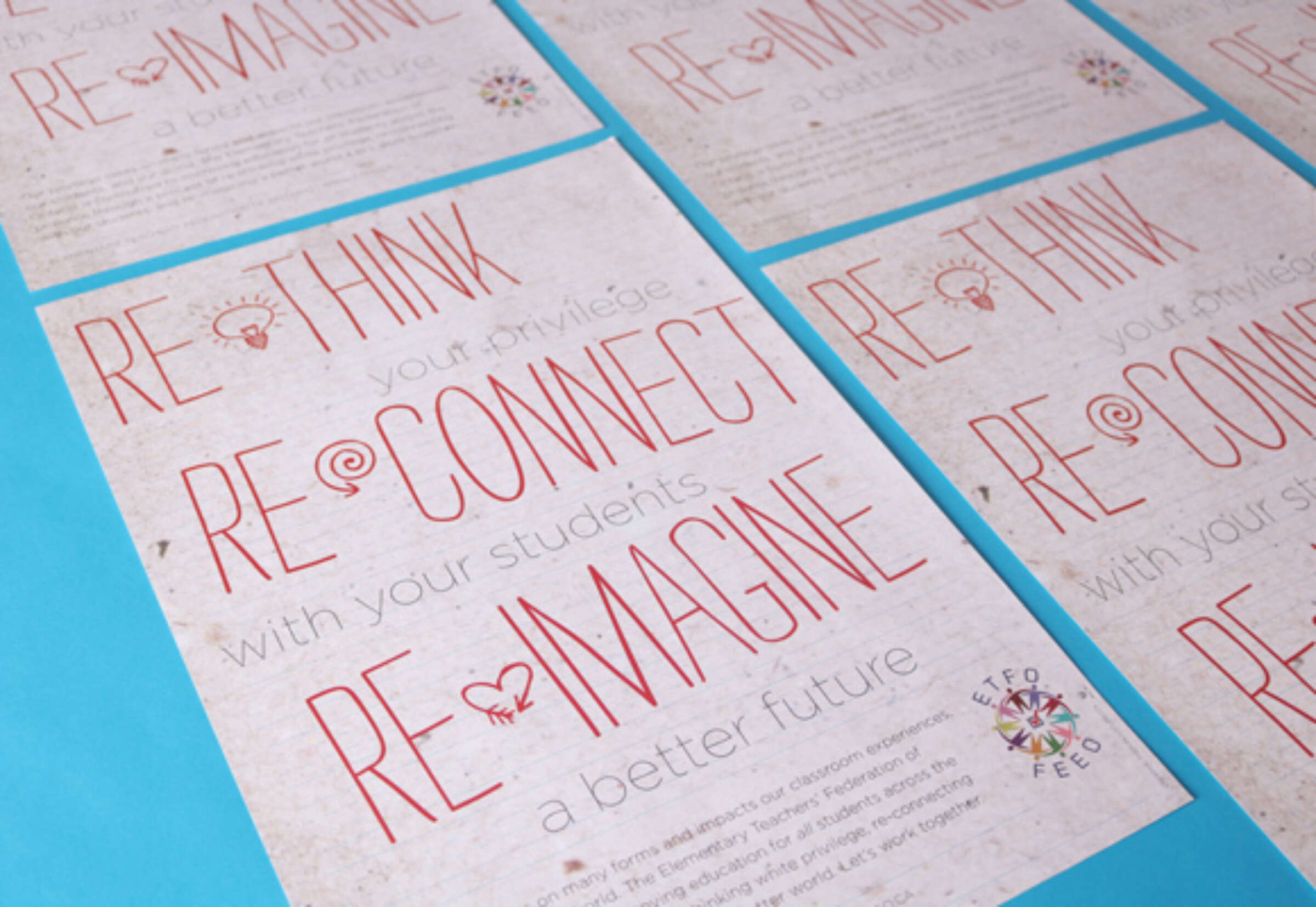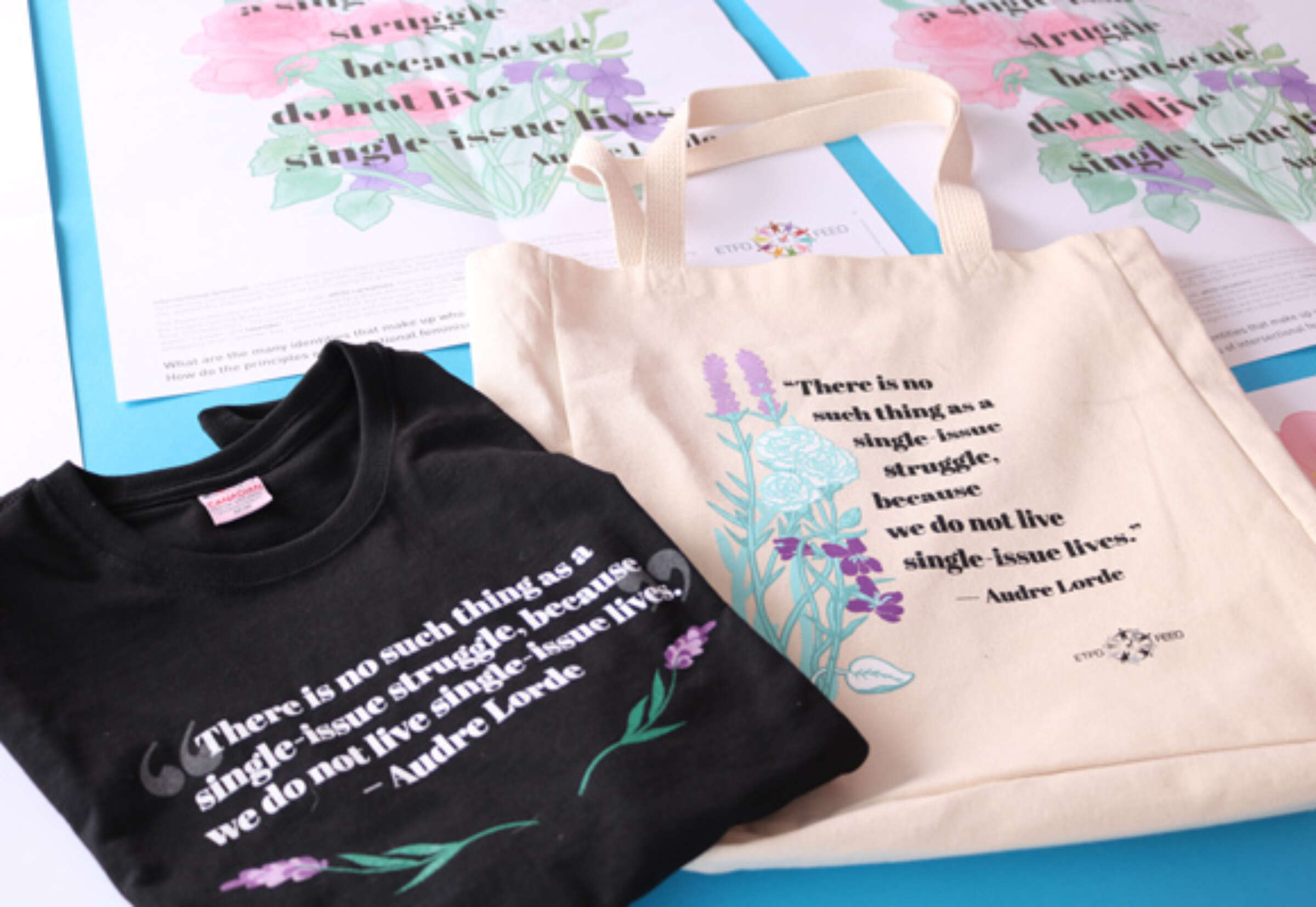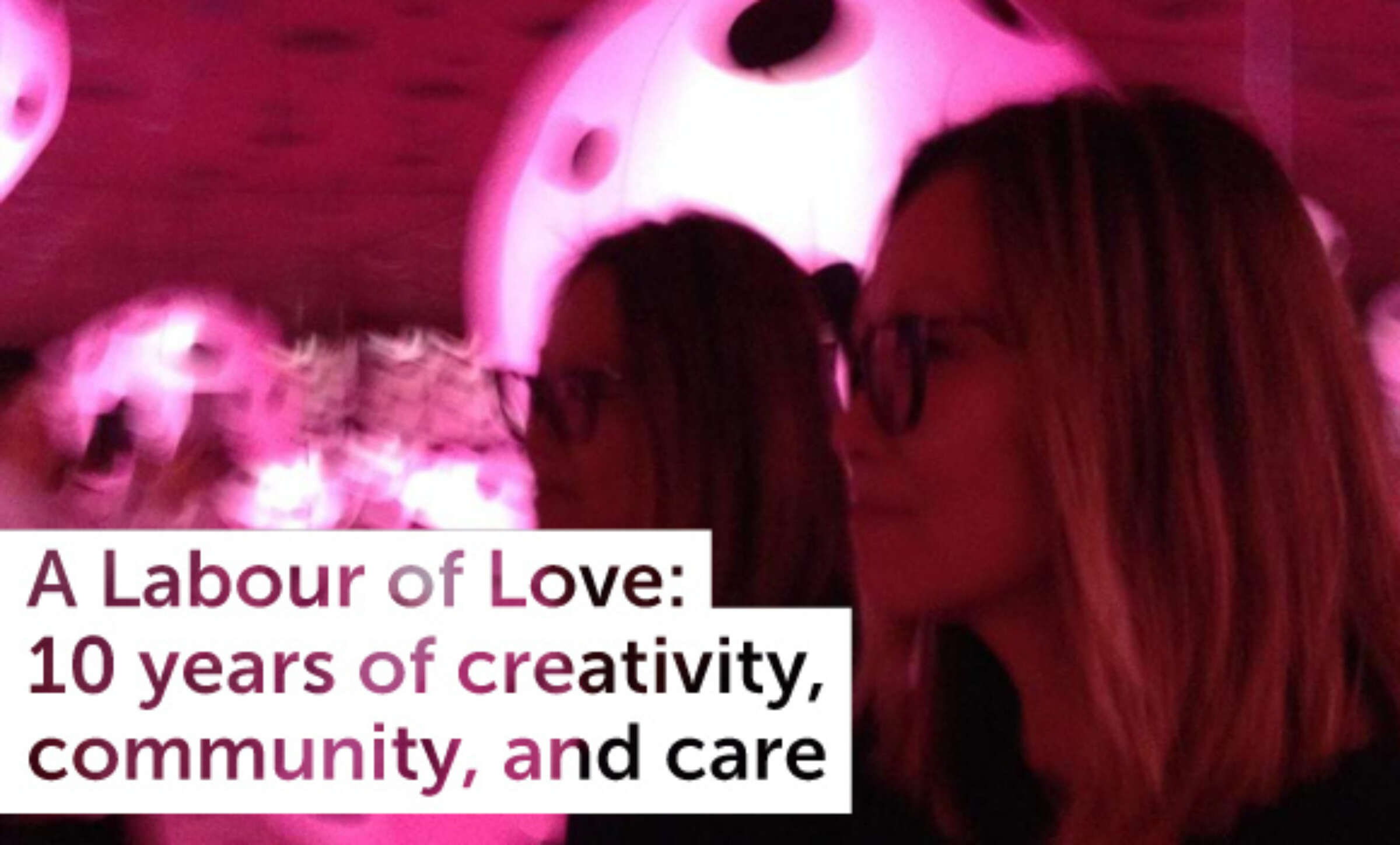[A Labour of Love] Jill Aoki-Barrett
April 2019
Welcome to this edition of A Labour of Love: 10 Years of Creativity, Community, and Care, celebrating a decade of working with incredible people for a better world. In this edition, we’re speaking with Jill Aoki-Barrett, an educator and staff at the Elementary Teachers’ Federation of Ontario (ETFO), who we’ve had the pleasure of working with over the last five years. Jill taught elementary grades (K-8) for twenty-two years and during that time, as a member of ETFO, served on and chaired various equity committees, social justice writing teams, and facilitated equity workshops. ETFO is the professional and protective organization representing occasional teachers and education professionals employed in Ontario’s public elementary schools, where Jill has been working in Professional Learning/Curriculum Services.
The Public: Hi Jill, thanks for chatting with us today! Can you start by telling our readers about some of the ways you and ETFO have been working with us?
Jill Aoki-Barrett: We first started working with The Public on ETFO’s White Privilege resources, which included a booklet, lesson plans, posters, and buttons. The booklet, Re-think, Re-connect, Re-imagine, helped educators understand and self-reflect on the concept of privilege and offered tools for what you can do in your classroom, school, and community around white privilege.
We also recently produced an intersectional feminist series of posters, tote bags, and t-shirts with The Public. Sheila is currently working on the design aspect of a feminist curriculum project for junior intermediate students. She also acted as a “femtor” to help members who are on the writing team navigate the content of their writing. We’re also working on Culturally Relevant and Responsive Pedagogy (CRRP) materials right now and we’re really excited about that, too.

When we were preparing to create the Re-think, Re-connect, Re-imagine booklet, we called in Sheila to work with us. We didn’t really know what we wanted to call it, but she was able to take what we had to that point, and make the resource even more accessible with her creative framework. It was so exciting to work with someone where we didn’t have to wonder “will they mess it up, because they don’t understand?” One of the pillars of ETFO is “Building a Just Society” so it’s important that we work with people who understand how that looks. Sometimes when you meet new people you’re not sure that they’ll understand that, but Sheila could totally take our ideas to the next level. It’s so easy to work with her, because of who she is: her framework, as a person, and just the quality of the product that she produces. You never have to second guess it or worry about it; it’s just going to get done and it’ll be better than imagined.
The intersectional feminist posters, bags, and t-shirts were a huge hit. Everyone loved them, because everything had a deeper meaning. So if you looked at them at face value, you’d think “it looks great,” but when you delve into things deeper, it’s like “oh my god, each flower represents something, that’s so cool!" With the quilt poster, each quilt square had a different fabric, but each fabric pattern had a deeper meaning. The work is always very functional, but it’s also very purposeful.

TP: What feedback have you received from educators about using these resources?
JA: So, we still offer a white privilege workshop, and in fact, we’ve updated it, because five years ago, it was still a really new concept, but last year we revised it, because we found more people were more familiar with the term and could engage in the dialogue. So, what happens is different locals across the province request that the white privilege workshop be presented to their local members. The members that have been trained go to these different locals to run these workshops for other educators of primary to Grade 8 students. Every participant gets a booklet, buttons, and poster when they attend the session. We have members who are at different points of the equity continuum so we hope that regardless of their starting point it’s helpful, because it gives them some tips and practical strategies for teachers to practice with students in the classroom, at their schools, and in their communities to be more aware, reflective, and responsive in what they do.
That’s what a lot of the feedback was; members were telling us “it’s so great that there are things we can actually do,” and “I can go back into my school and classroom working with my students and I can try this,” or “now that I know this, I can do a better job with the kids.” Also, the lessons that are online for our members have been piloted in classrooms. I got to go observe some of the lessons being taught and it was great to see how engaged the students were in the activities. When debriefing with the teachers who were piloting the lessons, some of whom hadn’t done much of this work before, the feedback was, “wow the kids really love this.”
We wanted to make sure that the materials were accessible to everyone. It was really important to us to make sure people were able to ask themselves, “where do I want the students to land?” When there is so much discussion going on, we want to ensure we aren’t setting up situations where we’re reinforcing or perpetuating myths and stereotypes. I believe that the way that Sheila helped design and frame the materials to ensure accessibility has had a direct influence on how we have and continue to organize things.
TP: Can you tell us about some of the ways you’ve seen the White Privilege project evolve?
JA: Five years ago, the White Privilege project was a really big deal and a new concept for many. As a result, we received a lot of backlash at that time. However, now when you say “white privilege,” most people are familiar with the term and accept it. It’s really quite amazing to see this evolution amongst society and our members. In fact, we had to update the workshop last year because of the heightened understanding and awareness, and the White Privilege project has continued to grow. Members and schools have accessed copies of the booklet for themselves, school administration, and community council meetings. We also have lesson plans that members who teach primary, junior, and intermediate students can access. The new Culturally Relevant and Responsive Pedagogy document, also being designed by Sheila, is a continuation of the work, and we’ve also developed another workshop which is an extension of the new resource.
TP: It makes a really big difference that you’re creating a resource for people working with youth. How have you seen these resources impact the youth?
JA: Yes, and students want to have these discussions. Besides observing the pilot lessons, when I was in the classroom – I taught for twenty-two years – I taught through a culturally relevant and responsive pedagogy framework and the students absolutely loved it, because it was meaningful. It mattered to them to learn about different issues, because they were living them, and someone was finally acknowledging their lived experiences. When you do work in the classroom, it’s joyous and I really miss that. When I would have a new class, all my read-alouds would be social justice related. The kids would always think it was the same author, because they had never been exposed to so many read-alouds that I did, but they were always captivated, because they could make connections to them.
So that’s why I love the job I have now, because it’s just creating more resources for members to be able to use books in their classroom that make a difference. So you can be creative in the way that you can present materials to students, so that you’re still following the curriculum, but it can be in ways that are probably way more meaningful to the students. There’s a lot of great stuff that can happen and is happening in classrooms.
TP: Thanks Jill! We can’t wait to continue to see ETFO’s work grow in even more empowering and beautiful ways!
Date

How do you want to change the world and how can we help?
Let’s Connect